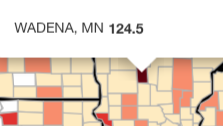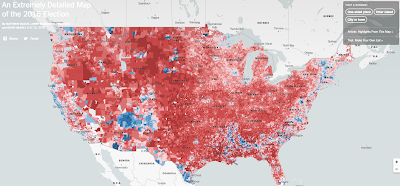Doping the Vote
 Although I’ve been a pretty normal consumer of World War II entertainment fare since my youth--from Battle Cry and Sands of Iwo Jima through A Bridge Too Far and Patton up to Saving Private Ryan and Inglorious Basterds--I’ve never been one of those World War II obsessives who spends hours in front of the History Channel tracking every battle or immersed in Greatest Generation™ literature. So that probably accounts for my shock when I took a flyer on a new Netflix series awkwardly titled The Greatest Events of World War II in Color and learned in episode one what a crucial role drugs played in the Third Reich. Most notable was the drug Pervitin:
Although I’ve been a pretty normal consumer of World War II entertainment fare since my youth--from Battle Cry and Sands of Iwo Jima through A Bridge Too Far and Patton up to Saving Private Ryan and Inglorious Basterds--I’ve never been one of those World War II obsessives who spends hours in front of the History Channel tracking every battle or immersed in Greatest Generation™ literature. So that probably accounts for my shock when I took a flyer on a new Netflix series awkwardly titled The Greatest Events of World War II in Color and learned in episode one what a crucial role drugs played in the Third Reich. Most notable was the drug Pervitin:Pervitin was the early version of what we know today as crystal meth. And it was fitting that a German soldier would become addicted to the stuff: the drug, Der Spiegel notes, first became popular in Germany, brought to market by the then-Berlin-based drugmaker Temmler Werke. And almost immediately, the German army physiologist Otto Ranke realized its military value: not only could the methamphetamine compound keep fighters…alert on little sleep; it could also keep an entire military force feeling euphoric. Meth, Spiegel puts it, "was the ideal war drug."And it was, as such, put to wide use. The Wehrmacht, Germany's World War II army, ended up distributing millions of the Pervitin tablets to soldiers on the front (they called it "Panzerschokolade," or "tank chocolate"). The air force gave the tablets to its flyers (in this case, it was "pilot's chocolate" or "pilot's salt"). Hitler himself was given intravenous injections of methamphetamine by his personal physician, Theodor Morell. The pill, however, was the more common form of the drug. All told, between April and July of 1940, more than 35 million three-milligram doses of Pervitin were manufactured for the German army and air force.The Netflix documentary says that the Nazis mass consumption of tank chocolate was largely responsible for their stunning assault on France through the Ardennes Forest in 1940. Due to the drug, they were able to accomplish a two-week goal in three days because they didn’t need sleep and fought with a ferocity that would come to be their brutal calling card in the early years of the war. (I should note, the documentary makes clear that the Germans were also aided in the Battle of France by the arrogance and ignorance of the French high command…whose drug of choice must have been afternoon bottles of Bordeaux).This new addition to my personal databank got my mind thinking along two tracks…one trivial…the other possibly profound. The trivial is: Why hasn’t Hollywood addressed this Nazi drug habit in any of the many films made about the war? (If they have and I missed it, I’d appreciate a heads up from anyone out there with a title or two.) The more profound thought though is this: How many examples do we have from history of mass populations of people reacting in such a uniform way to common drug usage as to majorly alter a society’s behavior? As my mind toyed with the idea, I wondered if such a phenomenon could be at work in the USA today. So I went to two interactive maps on the Internet and began to play amateur sociologist. The first map (shown above) is from the CDC (Center for Disease Control and Prevention) tracking prescription drug use by county in the US in 2016. The second (shown below) is from the New York Times tracking US voting by county in the 2016 presidential election. I was looking for correlations between high opioid use (deep purple and red) and political preference (red for Republican/Trump; blue for Democrat/Clinton). What I’ve found in my survey--thus far restricted to just a dozen states—is rather startling in two regards:I have yet to find a deep purple high opioid dependency area that did not go for Trump…and by wide margins.Faint blue areas (Dem/Clinton) in deep red states show a considerable drop off in opioid use compared to the red areas around them.


Someone who really knows this stuff could probably confirm or dismiss these admittedly superficial findings by superimposing the maps over each other. Unfortunately, that’s beyond me, though I would like to use this early exploration of the issue to reach out…
Whoa! Hold everything...stop the music!!! Just as I was about to explain to you, my readers, my humble plan to package my measly research and reach out to some experts in the field, I Googled to find that the experts had already weighed in on the subject. Boy, did they ever. From the Journal of American Medicine:
In examining the maps showing the geographic distribution of the opioid epidemic, several observers have noted the similarity to the results of the 2016 presidential election.13-16 Counties and states with the highest opioid use were often areas carried by the Republican candidate in the election. This is not surprising, because aspects of the narrative analyzing the presidential vote echoed themes that occur in explanations for high opioid use.17,18
From Newsweek:
However, this did not mean that drugs cause Trump support, or that Trump support causes drug use. Instead, the results could indicate that the socioeconomic factors that may inspire someone to vote for Trump also may increase the likelihood that he or she would depend on opioids. The authors of the study cited feelings of marginalization, economic stress and poverty, lack of employment opportunities and feeling left out.
From the UK:
The study found that Mr Trump received about 39 per cent of the 2016 vote in the 638 counties with the lowest rates of long-term (90-day supply or more) Medicare opioid prescriptions, but about 60 per cent of the vote in the 693 counties with the highest rates of long-term opioid use.These findings dovetail with some other research that's come out since the election. A December 2016 study found, for instance, that "Trump over-performed the most in counties with the highest drug, alcohol and suicide mortality rates."
From bloggers (!) who were quicker on the uptake than I was:
It's easy to see similarities between the places hardest hit by the opioid epidemic and a map of Trump strongholds. "When we look at the two maps, there was a clear overlap between counties that had high opioid use ... and the vote for Donald Trump," says Dr. James S. Goodwin, chair of geriatrics at the University of Texas Medical Branch in Galveston and the study's lead author. "There were blogs from various people saying there was this overlap. But we had national data."
I find this all somewhat comforting because as we get closer to the end of the Trump Era, my growing concern is with the vast segment of bitter, marginalized, self-loathing, armed and dangerous Trump supporters he will leave behind. It’s hopeful to know that by forcefully and effectively addressing the opioid epidemic, we may actually be able to cure some of these people of their malignant politics. It’s worth noting that once Nazi Germany realized the harmful effects (over aggression, depression, suicide) that the widespread use of Pervitin was having on their military as well as society as a whole, they cut way back on manufacture and distribution of the drug. Of course they then lost the war, but better that, I’d say, than permanent loss of their hearts and minds. By the way, the big takeaway from this blog post? I've still got things to learn...lots of things.

Published on November 16, 2019 17:14
No comments have been added yet.



